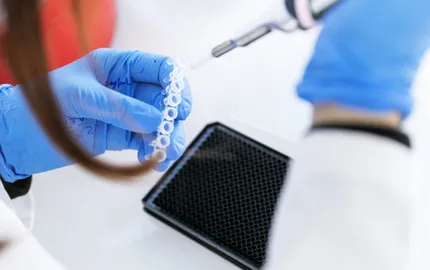- Home >
- Units research >
- Chemistry and Modelling for Biology of Cancer (UMR9187 / U1196)
Presentation

The central activity of the CMBC unit is to develop small molecules to probe and control the biological activities of key targets involved in cancer. These are non B-nucleic acid structures (G-quadruplexes, Abasic sites, …) and proteins (TAM kinases, non B-nucleic acid structures interacting proteins, …).
The drug and probe discovery activity is sustained by molecular modelling approaches and imaging. The CMBC unit is hosting the Institut Curie–CNRS proprietary library comprised of over 9000 chemical compounds.
The main research themes of the unit include:
- Design and synthesis of G-quadruplex targeting agents for probing, imaging and mapping
- Design, synthesis and studies of novel small-molecule ligands and probes able to recognize unusual DNA and RNA structures
- Screening approaches and rational design for the synthesis of kinase inhibitors
- Identificaction of radiosensitizing molecules for the treatment of cancers and determination of their molecular mechanisms of action
The main methodological approaches are :
- Chemical biology
- Medicinal chemistry (Hit to lead optimization)
- Biophysics and Biochemistry of nucleic acids
- Molecular dynamics and virtual screening
- Cellular biology & radiosensitization
More content on this team










